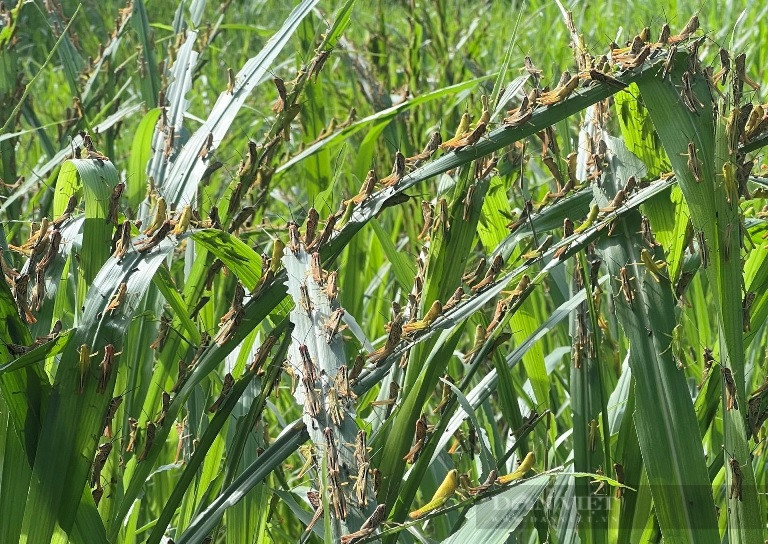
The yellow-backed bamboo locust, along with other locust species, has been identified as the primary culprit.
In a recent document, the Ministry highlighted the severe threat posed by the yellow-backed bamboo locust, which can form large swarms and migrate rapidly to find food and lay eggs.
This pest has been causing significant damage in China, Laos, and Vietnam, particularly to agricultural and forestry crops.
"This is a pest that can move quickly, has great destructive power, and is difficult to control," the Ministry emphasized.
The yellow-backed bamboo locust has been a persistent problem in Vietnam since 2008, inflicting damage in mountainous districts of provinces including Quang Ngai, Nghe An, Thanh Hoa, Son La, Dien Bien, Phu Tho, Bac Kan, and Cao Bang.
These locusts primarily damage forestry plants such as bamboo, reed, rattan, and various agricultural crops like upland rice, corn, tobacco, banana, and cassava.
Between 2016 and 2018, outbreaks affected nearly 4,000 hectares annually. Although the scale of damage reduced from 2019 to 2023, 2024 has seen a resurgence due to favorable weather conditions.
Higher average temperatures and frequent light rain in the Northern midlands and mountains have created an ideal environment for locusts to thrive.
Currently, locust damage has been reported in 11 out of 16 provinces in the the Northern midlands and mountains, covering an area of 1,031 hectares. Cao Bang has been the hardest hit, with 773 hectares affected.
The Ministry warned that most of the young locusts are currently wingless, making them easier to control. However, in the next 10-20 days, they will develop wings and form swarms, significantly complicating control efforts and increasing the potential for extensive crop damage.
To mitigate the damage, the Ministry has recommended several actions:
- Provincial authorities should direct local agricultural departments and agencies to identify and spray locust nests while the insects are still young.
- Continuous monitoring of locust emergence, damage scope, movement direction, and cluster formations is crucial to organize timely preventive measures and avoid widespread infestations.
- Localities, especially those frequently affected, should develop proactive plans, budget estimates, and ensure the availability of materials and human resources for effective pest control.
- Authorities should provide information and guidance to forest owners and residents on detecting and addressing locust appearances, avoiding excessive chemical use that could harm the environment.
The Ministry of Agriculture and Rural Development will coordinate and guide localities in implementing technical solutions for locust control. It will also oversee inspection, supervision, and reporting on the situation to ensure effective pest management.
Tam An